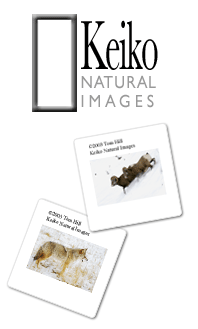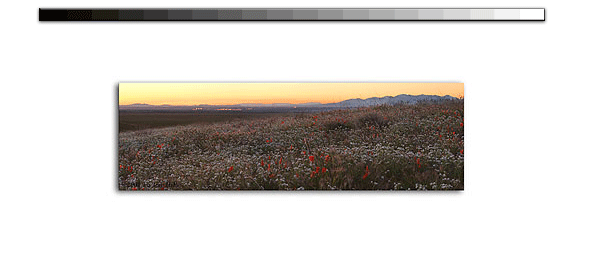|
This is the beginning of what I hope will be continually updated article on some of my thoughts about Apple’s latest professional software package; Aperture. First, let me say I hope to fill a niche not done my anyone else. Actually it can’t be done by anyone else because it’s all about what I feel verses the nuts and bolts of processing power and such I don’t hope to give super in-depth analysis of why the RAW processing power of this application is better than anothers. I’m not here to say why the application moves oh so slightly faster than someone else’s. I’m here to just describe what I’m doing, why I’m motivated to do what I do, and whether or not Aperture is meeting my needs. My hope is we get away from the pixel peeping mode when it comes to most software and hardware reviews of anything digital and become more in tune with the bigger picture of what the tools do for your ability to practice and succeed at your craft.
First, what is Aperture? This program is Apple’s foray into the fairly volatile, highly competitive, yet fairly well defined business of digital image processingsounds like I’m talking out of both sides of my mouth. I say the business Apple is entering is fairly well defined because there are definitely favorites among the different users and photographers out there. There are folks out there that have a workflow, are comfortable with it, and will only change after they pull the mouse out of their cold dead hands… Okay, I dramatize a bit but it paints the picture. Photographers, while being attracted to technology, can be a very cynical, stubborn bunch when it comes to new things. Convincing them to go with an entirely new software package can be quite a challenge.
Aperture has a great heritage. First, Apple computerone of the most innovative companies everhas made a reputation in the professional video editing world with its Final Cut Pro application. This has taken that market by storm. Almost overnight, Final Cut Pro dominated its market. Secondly, Macs have always enjoyed a favored position among graphics professionals. Its reputation as being more friendly to “right brained” people isn’t lost in the hype related to Aperture’s introduction. Third, perhaps a distant third reason Aperture is getting such a huge reception, is there are so many choices and configurations out there from various software venders to do various specific portions of the photographer’s workflow that anyone that introduces a good application will be hugged on introduction. There’s a starving out there to narrow the market to a few applications that really work. Right now it's not unknown for a photographer to use one application for importing his images, another for keeping track of all his media files, and still another for working tweaking his image files. The situation is simply frustrating and an application that claims to solve many of these problems in a single package definitely catches some attention.
So, that’s were we sit and it’s where we’re starting from.
My workspace Let me add some more caveats… First, I’m using Aperture on a 1.67 ghz Powerbook. It has 2gig of RAMas much as the laptop can hold. This is a not a slouch computer in Apple’s portable computing stable. But, it’s no quad G5 desktop. My workspace is pretty much that 1.67 ghz PB connected to a 20inch Cinema Display LCD. This monitor is my primary editing environment. While the laptop’s lcd is really great it isn’t good enough for really fine tweakingthe type of thing I’d do if I was working in Photoshop. For info on getting a file from my archive to print, here’s an article on that process:
http://www.keiko-ni.com/keikosite/equiptech/digital/imagetoprint/imagetoprint1.html
My computers are connected to four high capacity hard drives for archive purposes. Here’s an article on how I archive my images:
http://www.keiko-ni.com/keikosite/equiptech/digital/archiving/archiving.html
For comparison purposes, I’ve written a synopsis of my workflow before using Aperture. Compare this to what I will be doing with Aperture--I’ll get into that in a while:
- Shoot RAW+JPEG with a D2h. Why do I shoot JPEG? That’s because it’s fast, renders fast, and it’s completely compatible with my older browser, iView.
- Edit prior to downloading from the CF card using iView. I review the JPEG’s for sharpnessthey load a lot faster than NEF’s in iViewand delete almost on spec those that aren’t sharp.
- After the edit, I rename the NEF image files with iView using my standard naming convention.
- Import all “named” images off the CF card into a temporary project folder on my computer’s desktop. Hopefully, this speeds things up by only allowing me to transfer images I’m willing to keep.
- Delete all “un-named” images on the CF card.
- Transfer the project folder to archive hard drives after the project is complete.
- Select an image to process/manipulate using an iView Catalog
- Convert from RAW to a .psd file using Nikon Capture. This is where I deal with the Nikon Capture interface and speed, which honestly isn’t the fastest or most acceptable thing out there. My goal here is to make the biggest adjustments within a RAW converter to retain image quality.
- Open the image in Photoshop to apply the final tweaks. And, save the images with adjustment layers to avoid the potential of too many of adjustments and hurting a basic file.
- Print the final prints from within the Photoshop environment.
That’s pretty much it. I may do a few cats and dogs things within Photoshop to deal with various issues. But, what you see there is pretty much what I do to get an image from the CF card to a print. I have more details at various steps in other articles if you’re interested. I give this information just so you know where I’m coming from and perhaps what pre-disposition I might have.
|
|
|









